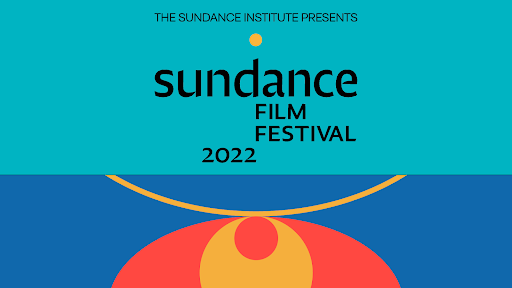Source: Sundance Film Festival
The awards season for the films of 2021 may not have reached its end as of yet – in fact, at the time of this writing, this year’s Academy Award nominations have yet to be announced – but that doesn’t mean people aren’t already looking ahead to what this latest year has to offer. One needs to look no further than the most recent Sundance Film Festival, held this year between January 20th and 30th, for proof of this. Although the rise of the COVID-19’s Omicron variant has forced all film screenings to be held virtually instead of in person\at the various theatrical venues scattered throughout Park City, Utah, there was nonetheless an abundance of quality cinema to be found at the 2022 event, with the best of the best being honored with at least one of the festival’s numerous revered prizes. It’s hard to say how many of these films will have lasting success in the coming year, especially with so many other films expected to be released and gain attention, but what has been shown so far has proven to be nothing short of spectacular, and at the very least they have the pleasure of being honored by one of the nation’s most admired film festivals.
Easily the most coveted of the awards given out at Sundance are the four Grand Jury Prizes, each categorized by both type of film (Dramatic or Documentary) and place of origin (U.S. or World Cinema). Winning the U.S. Dramatic Competition Award was “Nanny”, a horror film from writer/director Nikyatu Jusu (the second black female director to win the prize), while the U.S. Documentary Competition Award was given to “The Exiles”, directed by Ben Klein and Violet Columbus. The award for World Cinema Dramatic Competition, meanwhile, went to “Utama” and director Alejandro Loayza Grisis, while “All That Breathes” and its director, Shaunak Sen, were honored with the Grand Jury Prize for World Cinema Documentary Competition.
If a film could not be voted in favor of by the festival’s grand jury, then it still may find success among the general audiences taking part in the event. That is the purpose of the Audience Awards, voted on by festival-goers and generally regarded as more reflective of what a more general audience deems to be worthy. Of the films that vied for the various Audience Awards, it was “Nalvany”, an HBO-produced documentary crafted by director Daniel Rohr, that not only won the Audience Award for U.S. Documentary Competition, but was also named the overall Festival Favorite. Other Audience Award winners include comedy-drama “Cha Cha Real Smooth”, which won the U.S. Dramatic Competition Award for director Cooper Raiff; “Girl Picture”, a Finnish coming-of-age narrative from Alli Haapasalo that won the World Cinema Dramatic Competition Award; and “The Territory”, a film from director Alex Pritz and winner of the World Cinema Documentary Competition Award.
Although films are the primary recipients of the Sundance Film Festival’s various prizes, there are some awards that are designated specifically for certain aspects of the filmmaking process. Directors are unsurprisingly the most noteworthy winners of such awards, and as was the case for both the Grand Jury Prizes and the Audience Awards, there were four awards to hand out to directors in recognition of their cinematic accomplishments. At this year’s festival, it was Jamie Dack who won the U.S. Dramatic Competition Award for his coming-of-age film “Palm Trees and Power Lines”, while Reid Davenport was honored as the winner of the U.S. Documentary Competition Award for directing “I Didn’t See You There”. Meanwhile, Maryana Er Gorbach received the director’s World Cinema Dramatic Competition Award for her film “Klondike”, and the World Cinema Documentary Competition award for directing went to Simon Lereng Wilmont for “A House Made of Splinters”. Screenwriting and editing were also given their own Sundance prizes, with the winners including K.D. Dávila, who won the Waldo Salt Screenwriting Award for the film “Emergency”, while Erin Casper and Jocelyne Chaput received the Jonathan Oppenheim Editing Award for their documentary “Fire of Love”. Lastly, there is Chase Joynt, whose documentary “Framing Agnes” allowed her to be honored with the NEXT Innovator Prize.
Then there are the Special Jury Prizes, also divided into one of the four previously discussed categories and handed out for specific special achievements. The U.S. Dramatic Special Jury Award: Ensemble Cast went to the cast of the action thriller “892”, while the U.S. Dramatic Special Jury Award: Uncompromising Artistic Vision was given to Bradley Rust Gray for his film “Blood”. The U.S. Documentary Special Jury Award: Creative Vision, meanwhile, was awarded to Margaret Brown for her film “Descendant”, and Paula Eiselt and Tonya Lewis Lee were given the U.S. Documentary Special Jury Award: Impact for Change for their film “Aftershock”. As for the World Cinema Dramatic Special Jury Award: Acting, Teresa Sánchez was honored for her performance in “Dos Estaciones”, while the World Cinema Dramatic Special Jury Award: Innovative Spirit was given to Martika Ramirez Escobar for her film “Leonor Will Never Die”. Snow Hnin Ei Hlaing, meanwhile, received the World Cinema Documentary Special Jury Award: Excellence in Verité Filmmaking for the film “Midwives”, and the World Cinema Documentary Special Jury Award: Documentary Craft went to Audience Award winner Alex Pritz and his film “The Territory”.
If there is one greater achievement than winning a Sundance award though, it’s receiving the backing of a major studio for widespread distribution, which would allow for greater access to a given film and the chance of said film getting even more attention. There were many films that found the backing of big distributors at this year’s festival; among them are “Brian And Charles”, picked up by Universal and Focus Features; “Fresh”, acquired by Searchlight Pictures and Hulu; and both “Fire of Love” and “The Territory”, each having National Geographic Documentary Films to call its distributor. Whether or not a film received an award or the backing of a major distributor though, its exhibition at the Sundance Film Festival is still a commendable accomplishment, and it’s hard not to appreciate each and every work of cinema that found its way into being part of this most recent event.




